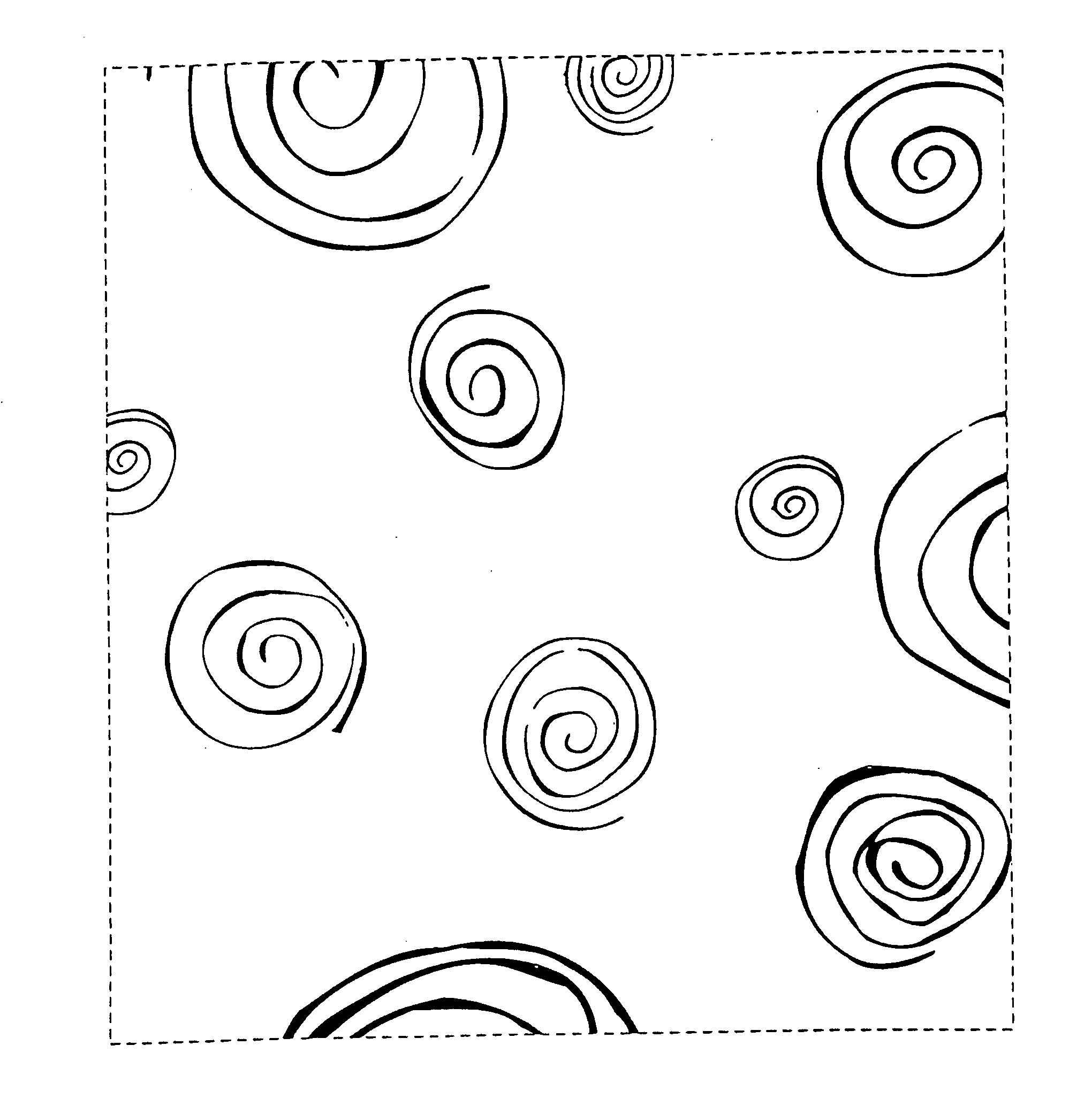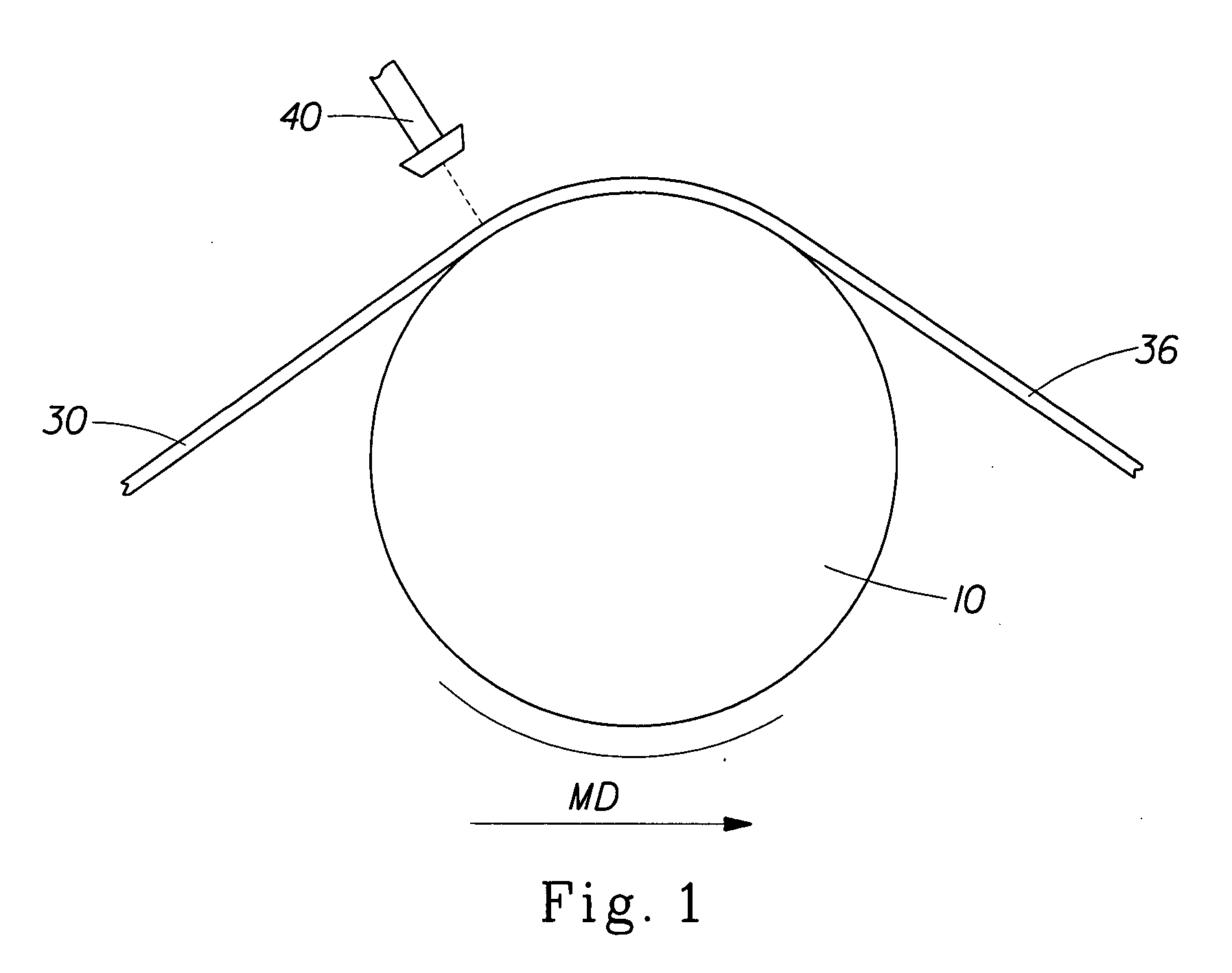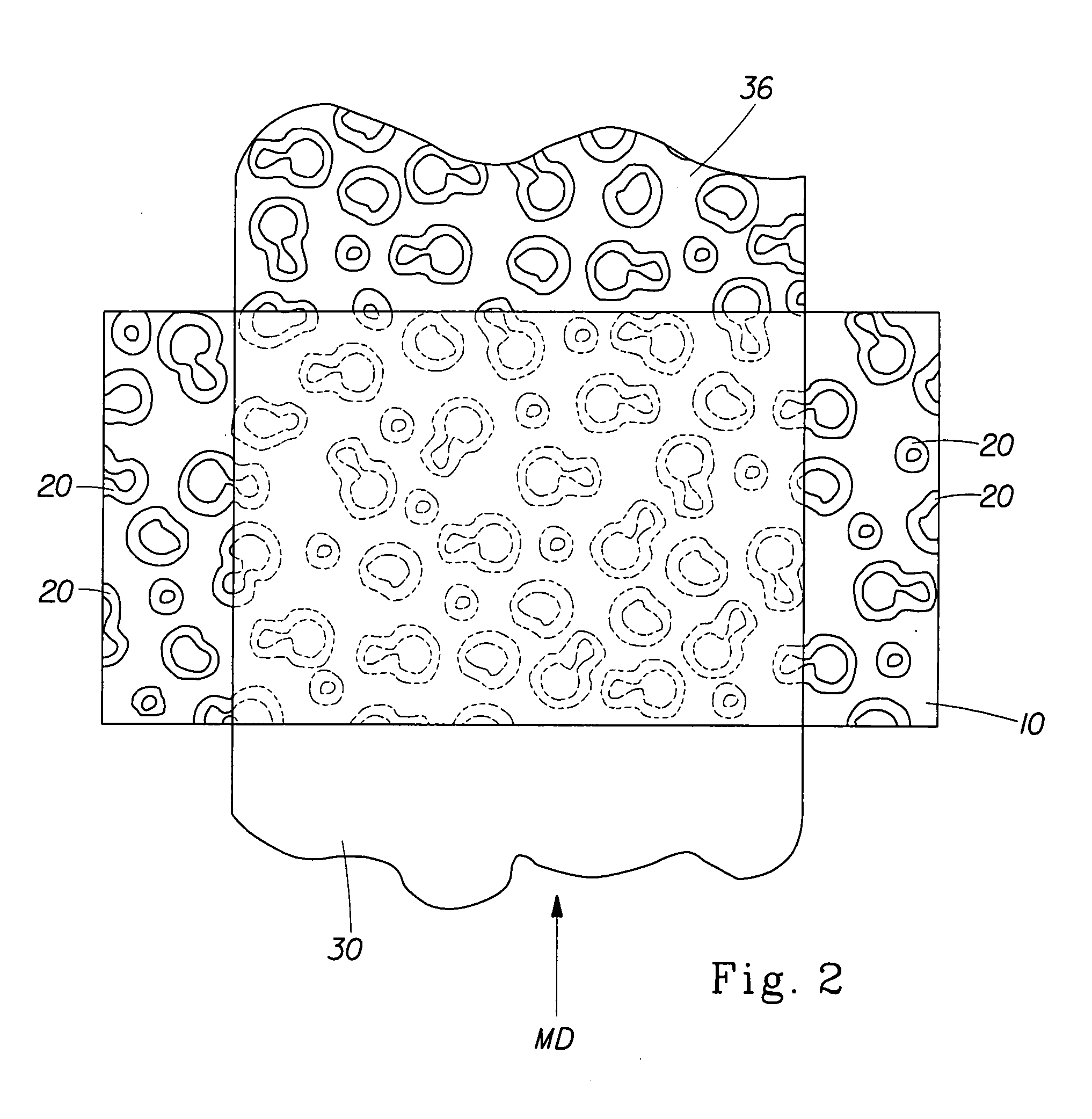Molded elements
a technology of molded elements and fibrous structures, applied in the direction of transportation and packaging, synthetic resin layered products, chemistry apparatus and processes, etc., can solve the problems of reducing the total fluid holding capacity, unable to capillary void spaces of unmolded fibrous structures, and unable to funnel impinging liquid, etc., to achieve high texture impression
- Summary
- Abstract
- Description
- Claims
- Application Information
AI Technical Summary
Benefits of technology
Problems solved by technology
Method used
Image
Examples
examples
[0136] Examples A-C are examples of the fluid uptake kinetics for fibrous structures with low-level total molded area.
example a
[0137] In a first instance fibrous structure comprising a 60 / 40 blend of polypropylene fibers and viscose fibers and having a basis weight of 58 gsm was hydromolded with an array of circular elements in a roughly hexagonal pattern as depicted in FIG. 26. The total molded area of this pattern relative to the total surface area of the fibrous structure is about 49%.
[0138] In a second instance, a similarly composed fibrous structure comprising a 60 / 40 blend of polypropylene fibers and viscose fibers and having a basis weight of 58 gsm was hydromolded with the same pattern, but wherein about 50% of the circular elements were removed, at random, from the pattern as depicted in FIG. 18. The total molded area of this pattern relative to the total surface area of the fibrous structure is about 25%.
[0139] In a third instance, a similarly composed fibrous structure comprising a 60 / 40 blend of polypropylene fibers and viscose fibers and having a basis weight of 58 gsm was not subject to hydr...
example b
[0141] Similar to the example presented as Example A, a second series of fibrous structures comprising a 60 / 40 blend of pulp and Lyocell fibers and having a basis weight of 60 gsm were hydromolded with an array of circular elements in a roughly hexagonal pattern as depicted in FIGS. 26 and 18, with total molded area of this pattern relative to the total surface area of the fibrous structure is about 49% and about 25%, respectively, and compared with a similar fibrous structure without hydromolding, having a total molded area of about 0%.
[0142] Each of the fibrous structures was subject to the Fluid Uptake test method noted herein (below), with an impinging liquid whose composition is noted (below) as Example F. The fluid uptake kinetics for each of the described fibrous structures are given in Table 2.
TABLE 2% Molded AreaFluid Uptake Kinetics (msec)00.57250.39490.44
PUM
| Property | Measurement | Unit |
|---|---|---|
| Fraction | aaaaa | aaaaa |
| Fraction | aaaaa | aaaaa |
| Fraction | aaaaa | aaaaa |
Abstract
Description
Claims
Application Information
 Login to View More
Login to View More - R&D
- Intellectual Property
- Life Sciences
- Materials
- Tech Scout
- Unparalleled Data Quality
- Higher Quality Content
- 60% Fewer Hallucinations
Browse by: Latest US Patents, China's latest patents, Technical Efficacy Thesaurus, Application Domain, Technology Topic, Popular Technical Reports.
© 2025 PatSnap. All rights reserved.Legal|Privacy policy|Modern Slavery Act Transparency Statement|Sitemap|About US| Contact US: help@patsnap.com



